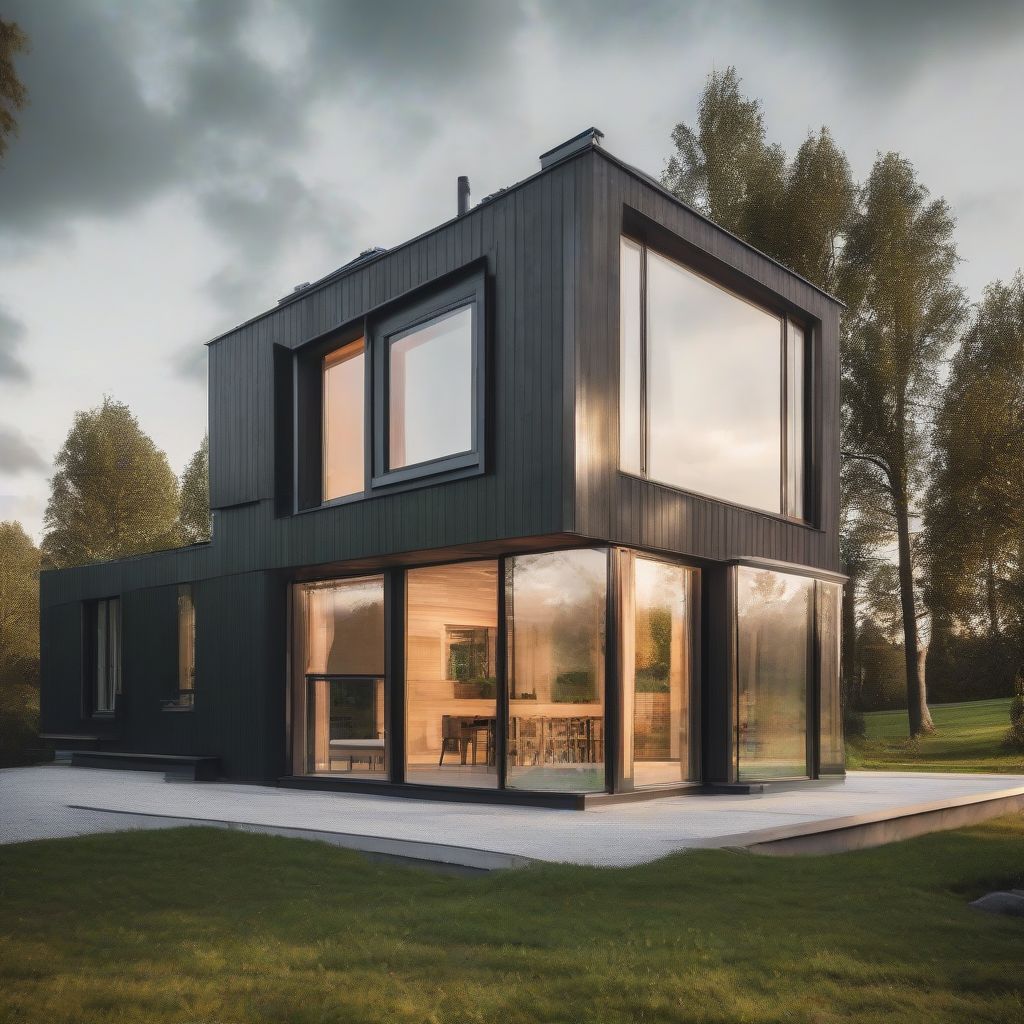Imagine a home so comfortable, it requires minimal heating or cooling, slashing your energy bills and leaving a lighter footprint on the planet. That’s the promise of a passive house. Whether you’re building from scratch or retrofitting an existing home, achieving this remarkable level of efficiency is within reach. This comprehensive guide will explore the essential steps to create your own passive house, unveiling the secrets to comfortable, affordable, and environmentally friendly living.
What is a Passive House?
A passive house, also known as a Passivhaus (its German origin), is a building designed to maintain a comfortable indoor temperature year-round with minimal energy consumption. It achieves this through meticulous attention to five key principles:
1. Superinsulation: Wrapping Your Home in a Thermal Blanket
Passive houses boast significantly more insulation than conventional homes, creating an airtight envelope that minimizes heat loss in the winter and heat gain in the summer. Think of it as wrapping your house in a thick, cozy blanket. This reduces the need for traditional heating and cooling systems.
2. Airtight Construction: Sealing the Gaps
Air leaks are a major source of energy waste. Passive houses employ advanced airtightness measures to prevent drafts and unwanted air exchange, further enhancing energy efficiency and comfort.
3. High-Performance Windows: Letting the Sunshine In (Strategically)
Specially designed windows with multiple panes and low-emissivity coatings play a crucial role. They maximize solar heat gain in the winter while minimizing heat loss, and prevent overheating in the summer.
4. Thermal Bridge-Free Design: Eliminating Heat Leakage Pathways
Thermal bridges are areas where heat can easily transfer through the building envelope, such as through concrete or steel beams. Passive house design meticulously eliminates these weak points to maintain a consistent temperature throughout the house.
5. Heat Recovery Ventilation (HRV): Fresh Air Without the Draft
A constant supply of fresh, filtered air is vital for a healthy indoor environment. HRV systems extract stale air from the house, using its heat to pre-warm incoming fresh air, minimizing energy loss while maintaining excellent indoor air quality.
 Passive House Exterior
Passive House Exterior
Building a Passive House from Scratch
When building a new passive house, you have the advantage of incorporating these principles from the ground up. This involves:
Site Selection and Design Optimization: Harnessing the Sun’s Power
Careful site selection and building orientation maximize solar gain in the winter while minimizing overheating in the summer. This often involves positioning large windows towards the south (in the Northern Hemisphere).
Choosing the Right Materials: Investing in Long-Term Performance
Selecting high-quality, sustainable building materials with excellent insulation properties is essential. This might include advanced insulation materials, airtight membranes, and triple-paned windows.
Working with a Certified Passive House Consultant: Ensuring Expertise
Collaborating with a certified Passive House consultant is crucial for ensuring your design and construction meet the rigorous Passivhaus standards. Their expertise will help you navigate the complexities of building a truly energy-efficient home.
Retrofitting an Existing House for Passive House Performance
While building from scratch offers the greatest flexibility, retrofitting an existing house to passive house standards is also possible, though often more challenging. Key steps include:
Energy Audit: Identifying Areas for Improvement
A professional energy audit will pinpoint areas where your home is losing the most energy. This provides a roadmap for prioritizing your retrofitting efforts.
Insulation Upgrades: Boosting Your Home’s Thermal Envelope
Adding insulation to the walls, roof, and floor significantly reduces heat loss and improves energy efficiency.
Window Replacement: Investing in Energy-Efficient Glazing
Replacing old, drafty windows with high-performance, triple-paned windows can make a substantial difference in your home’s energy performance.
Air Sealing: Plugging the Leaks
Identifying and sealing air leaks around windows, doors, and other openings is critical for achieving airtightness.
HRV Installation: Ensuring Fresh Air and Energy Recovery
Integrating an HRV system provides continuous fresh air while minimizing energy loss through ventilation.
 Passive House Interior
Passive House Interior
The Benefits of Passive House Living
The advantages of living in a passive house extend beyond energy savings:
- Unmatched Comfort: Consistent temperatures throughout the house, free from drafts and cold spots, create a truly comfortable living environment.
- Improved Indoor Air Quality: HRV systems ensure a constant supply of fresh, filtered air, promoting better respiratory health.
- Reduced Environmental Impact: Significantly lower energy consumption translates to a smaller carbon footprint, contributing to a healthier planet.
- Increased Resale Value: The growing demand for energy-efficient homes makes passive houses a desirable investment.
Conclusion
Building or retrofitting a passive house is an investment in comfort, health, and sustainability. While it requires careful planning and execution, the rewards are significant. By following the principles outlined in this guide and seeking expert advice, you can create a home that is both environmentally responsible and exceptionally comfortable. Are you ready to embark on your journey to ultra-efficient living? Share your thoughts and experiences in the comments below!



